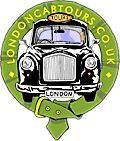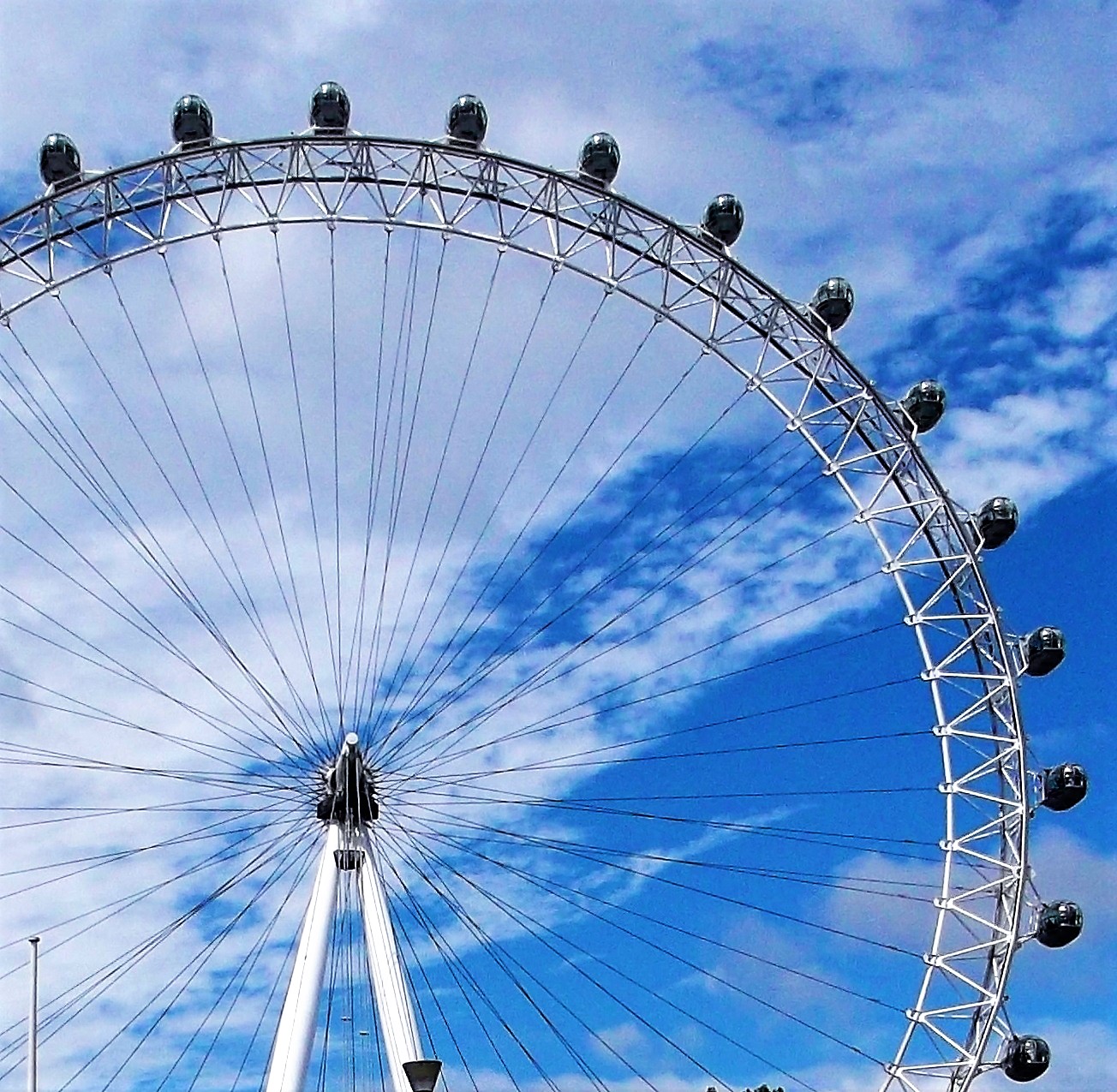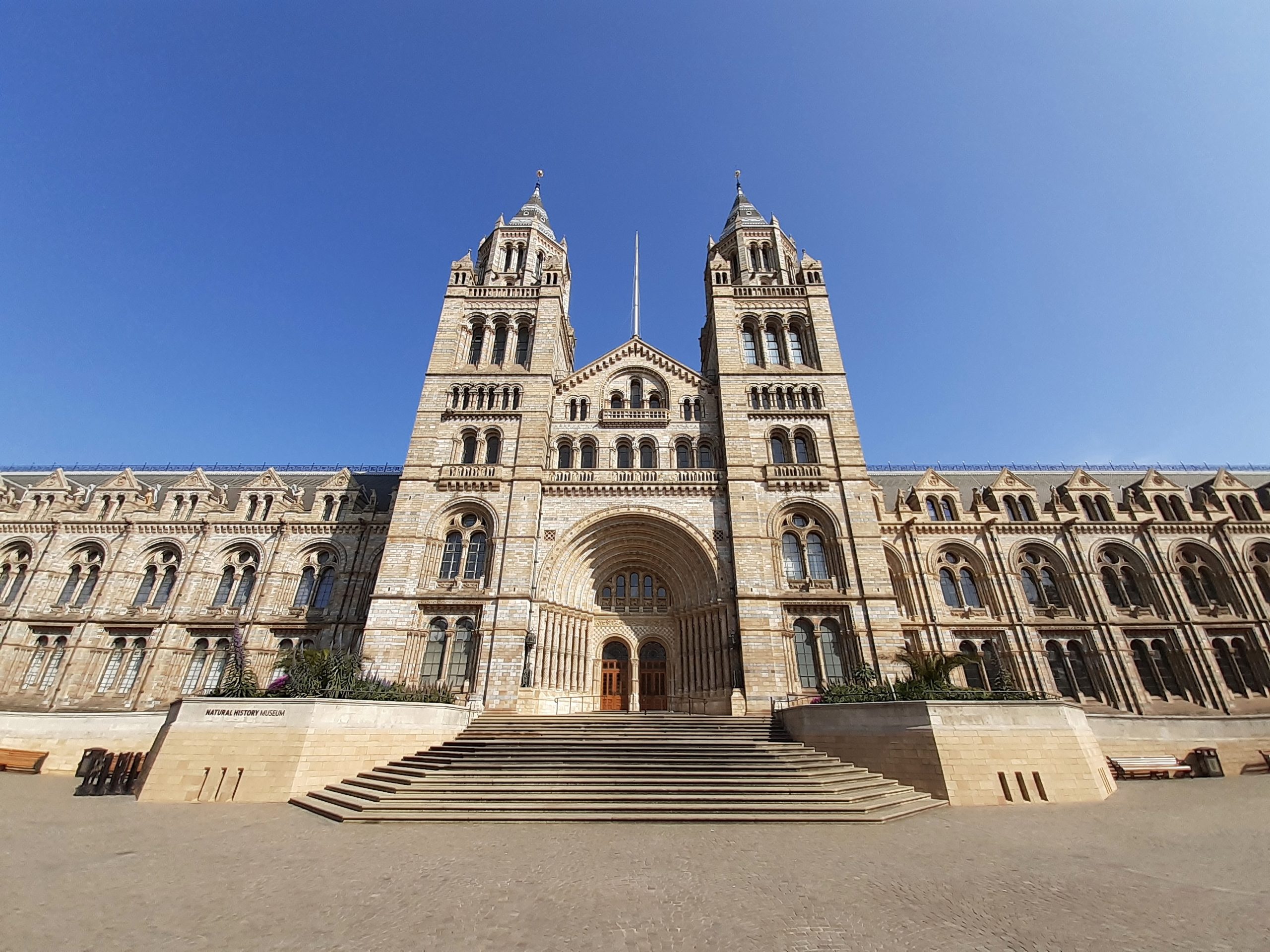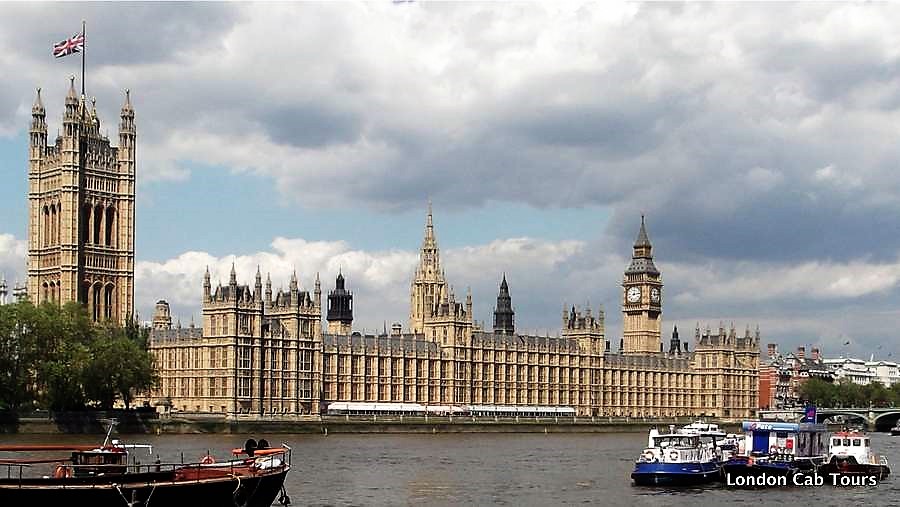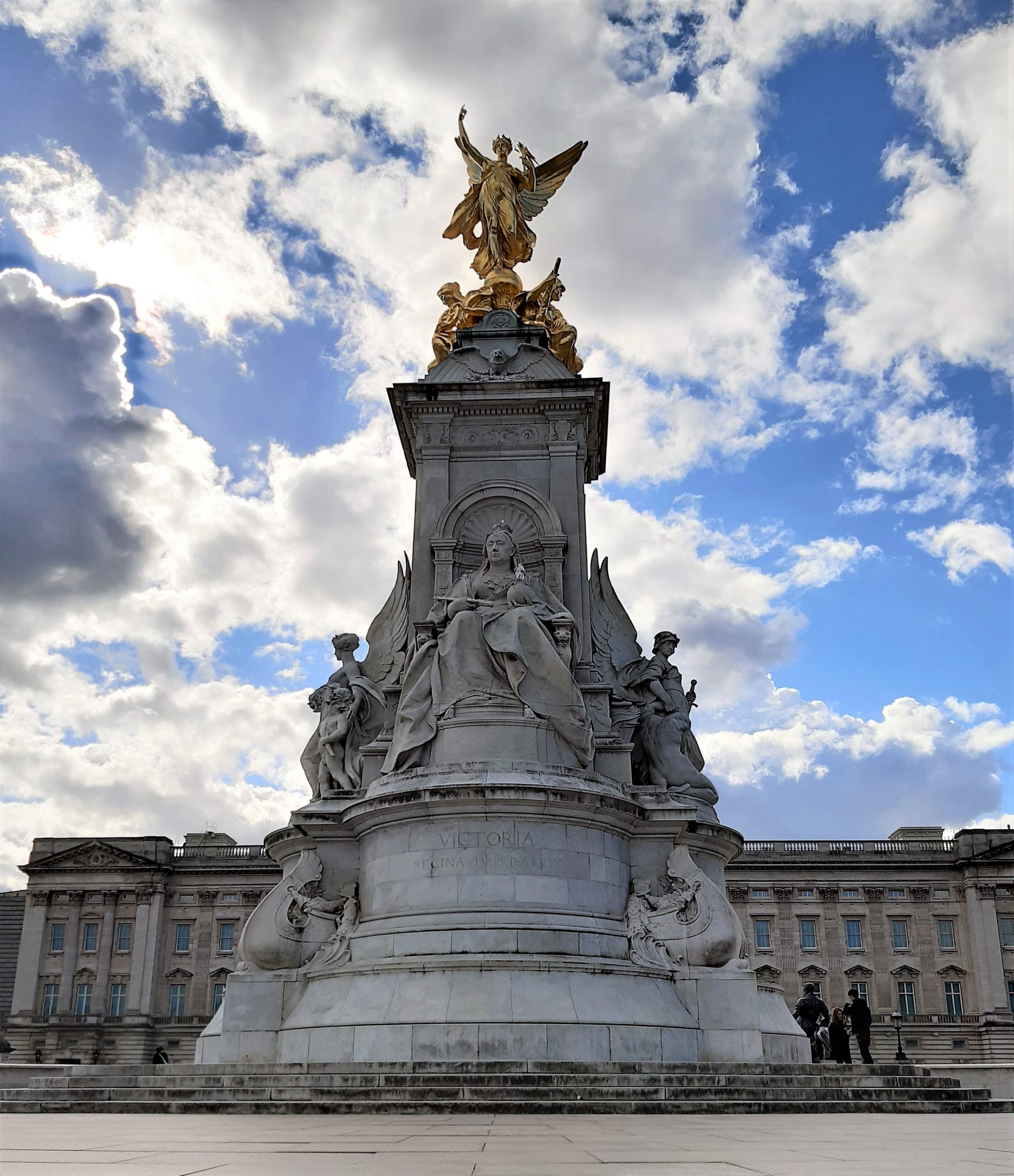London Taxi Drivers Glossary and Slang: Part 1 – Buildings and Locations
London hackney carriage drivers in the 1600s became London cab drivers in the 1800s and they in turn became London taxi drivers in the 1900s.
In fact all three names are still in everyday use, absorbed within the taxi trade lexicon as the trade evolved. As the taxi trade in London developed, over the past 400 years, there has always been slang used amongst the drivers. It could more accurately be described as a sub-slang, a jargon that uses both general London slang and a more specific slang that developed and is used only by London cabbies.
This London ‘dictionary’ lists three things: taxi drivers slang, slang used by taxi drivers and London taxi trade specific lexicon or jargon. Some words are historical and not used anymore. Many words and phrases are still in everyday use amongst London cabbies.
Part 1 focusses on Buildings and Locations.
| Buildings | ||
| Admirals (the) | Dolphin Square, SW1 | Upmarket residential blocks each named after a famous admiral or navigator: Grenville, Drake, Raleigh, Hawkins, Nelson, Howard, Beattie, Duncan, Keyes, Hood, Collingwood, Frobisher. Rodney is now a hotel. |
| American Workhorse | Park Lane Hotel, Piccadilly, W1. | Traditional, upmarket hotel popular with Americans. |
| Aztec Temple (the) | MI6 Building, SE1 | Its design resembles a ziggurat or Aztec pyramid. 1994. |
| Bindi (the) | The London Eye, SE1 | Origin: Hindu, circular mark or jewel worn on the forehead. Also see Mince Pie.
|
| Buck House | Buckingham Palace | Abbreviation. Derives from the name of the original 17th century mansion on the site.
|
| Bishopsgate | The Athenaeum Club, Pall Mall, SW1 | Founded 1824. A lot of members were bishops apparently. Also see Spit and Cough. |
| Bunshop | Lyons Corner House (any) | London’s first chain of tea shops. 1909 – 1977. |
| Chelsea Gasworks | Residential block next to the Carlton Tower Hotel, SW1 | Rounded design, like a gasholder. |
| Cripplegate | United Service Club, Pall Mall, SW1 | 1815 – 1978, also known as ‘The Senior’. Now the Institute of Directors building. |
| Dead Zoo (the) | Natural History Museum, SW7 | A world-famous museum full of stuffed animals.
|
| The Deaf and Dumb | Ministry of Information in WW2. | The commandeered Senate House, WC1. Was also the model for the Ministry of Truth in Orwell’s ‘1984’. |
| Den of Thieves | London Stock Exchange | Their motto is ‘my word is my bond’. Also see Thieves Kitchen. |
| Gaffs | Theatres, W1 and WC2 | Historic: a fair (mid 1700s) then any public place of cheap entertainment or a music hall (early-mid 1800s). Also see Gaff Street. |
| Gasworks (the) | Houses of Parliament, SW1 | A large building in Westminster full of ‘hot air’.
|
| General (the) | General Cab Company, SW9 | Operated up to 1500 taxis from 1905. |
| Hungry (the) | The Hungaria Restaurant, Lower Regent Street, SW1 | Doubled as an air raid shelter in WW2. |
| Inside Out Building | Lloyd’s of London, Leadenhall Street, EC3 | A reference to the architectural design of the world’s largest insurance exchange. 1986.
|
| Iron Lung (the) | Public convenience (male), Regency Place, SW1. | Standing only, made of iron. |
| Mince Pie (the) | The London Eye, SE1 | Origin: cockney rhyming slang for eye (mid 1800s). Also see Bindi. |
| Oak (the) | Taxi driver’s cafe | Or used to be. Under the Westway near Royal Oak Station. |
| Pandemonium (the) | London Palladium, Argyll Street, W1 | In a narrow street and ‘pandemonium’ during the burst. Also see Burst. |
| Pig and When | Wig and Pen Club, Strand, WC2 | A spoonerism. Former drinking haunt for lawyers and journalists. |
| The Rag | Army and Navy Club, Pall Mall, SW1 | Founded 1837. Meant as an insult but adopted by the club. |
| Rowton House | Ritz Hotel, Piccadilly, SW1 | Late 19th – 20th century. A joke; the real Rowton Houses were a chain of working class hostels. |
| Savaloy (the) | Savoy Hotel, Strand, WC2 | A humorous play on words. A saveloy is a bright red boiled sausage common in fish and chip shops. |
| Shakes (the) | The Shakespeare pub, SW1 | Abbreviation. A drop off point near Victoria Station. |
| Spit and Cough (the) | The Athenaeum Club, Pall Mall, SW1 | Founded 1824. Unsure of slang origin. Also see Bishopsgate. |
| Stage Door | West End Central Police Station, Savile Row, W1 | Referred to the side entrance of the building. Derived from a theatre stage door always being at the side or rear. |
| Thieves Kitchen | London Stock Exchange | Their motto is ‘my word is my bond’. Also see Den of Thieves. |
| Tom and Jerry’s | Derry and Toms Department Store, W8 | 1860 – 1973; jokey play on words. |
| Tripe Shop (the) | BBC HQ, Broadcasting House, W1. | Tripe is the edible lining from the stomachs of various farm animals. People can talk (or broadcast) a lot of it. |
| Uproar (the) | Royal Opera House, Bow Street, WC2 | Historical: mid 1700s. Audibly keen audiences. |
| Wedding Cake (the) | Queen Victoria Memorial, SW1 (aka the QVM). | Highly decorated, gilded and detailed memorial.
|
| Wet Doughnut | Princess Diana Memorial Fountain, Hyde Park | It’s ring shaped…and full of water. |
| Workhouse (the) | The Union Club, SW1 | 1800 – 1960s. Now the Canadian High Commission. |
| Locations | ||
| Baze (the) | Bayswater Road, W2 | Abbreviation. |
| Box of Tricks | Euston Station, NW1 | 1837 (old station), 1968 a new station, of modern ’box’ design. |
| Bridge (the) | London Bridge Station, SE1 | No explanation needed. |
| CAB | Chelsea Bridge, Albert Bridge, Battersea Bridge. | Acronym of the order of west London bridges over the River Thames. |
| Canary Land | The suburbs | Yellow Badge, or suburban taxi drivers, territory. Also see Yellow Badge. |
| Circus (the) | Piccadilly Circus | Abbreviation. |
| Dilly (the) | Piccadilly, W1 | Abbreviation. |
| Dirty Dozen | Complicated sequence of twelve back streets through Soho | A quick run that cabbies used which traversed Soho to the benefit of passengers. Can no longer be done due to ‘improvements’ in street management. |
| Eastern (the) | Liverpool Street Station, EC2 | Located in the City of London |
| Empire Church (the) | Lancaster Gate, W2 | A reference to both: Christ Church (1855 – 1977, demolished – now Spire House) and the in-situ Brabazon Memorial, the north inscription of which reads: ‘To him the British Empire was a goodly heritage to be fashioned like unto a city of God’ and the east inscription which reads: One King, one Empire, Empire Day (1934). |
| Flowerpot (the) | Covent Garden Fruit, Vegetable and Flower Market, WC2 | Circa 1650s – 1974; in and around the Piazza. |
| Flyers (the) | Airports: Heathrow, Gatwick, Luton, Stansted. | No explanation needed. Also see Out West. |
| Gaff Street | Shaftesbury Avenue, W1 | Location of many theatres. Also see Gaffs. |
| Hole in the Wall | Victoria Station, SW1 | Side entrance in Wilton Road for dropping off passengers. |
| Hole in the Wall | Waterloo Station, SE1 | Side entrance in Tennison Way for dropping off passengers at a pub of the same name. |
| Hospital Square | Queen’s Square, WC1 | London square that used to have four hospitals around it. It still has three in or around it. |
| Hot and Cold Corner | Royal Geographical Society, Kensington Gore, SW7 | A grand corner building. Statue in the niche on Kensington Gore is David Livingstone (Africa). Statue in the niche on Exhibition Road is Ernest Shackleton (Antarctica). |
| Loo (the) | Waterloo Station, SE1 | Abbreviation |
| Magic Circle (the) | Piccadilly Circus area spreading into Soho, Mayfair and St James’s | Entertainment districts. A source of much work, especially late evenings and nights. Also see Burst. |
| Magic Roundabout | Holland Park Circus, W14 | A big, busy roundabout between Holland Park and Shepherds Bush. Sometimes refers to Shepherds Bush Green itself (which is a triangle). |
| Occupied Territory | Bayswater, W2 | The entire area pre-WW2 due to the large number of foreign residents. Un-pc. |
| Out West | Heathrow Airport | Located on the edge of west London. Also see the Flyers. |
| Over the water | South of the River Thames, South London. | The mythical days of taxi drivers not taking fares over the water ended long ago. I think. |
| The Northerns | Euston Station, St Pancras Station, Kings Cross Station | Three large mainline stations ranged along Euton Road on the northern tip of central London – where trains also head north.
|
| Padders | Paddington Station, W2 | Abbreviation. Also see Western. |
| PG Tips | Palace Garden Terrace, W8 | Acronym/nickname and abbreviation. PG Tips is a well-known brand of tea. |
| Pill Alley/Pill Island | Harley Street, W1 – and surrounding streets | Street/area full of private doctors and medical practices. Also see the Resistance. |
| The Pipe | London Underground | A more irregular name for the Underground/Tube. |
| Polish Corridor | Cromwell Road, SW7 | Large Polish community once concentrated here. WW2 reference. |
| Poverty Corner | Archer Street, W1 | Traditionally a place where jobbing musicians sought gigs and jobbing garment industry workers sought seasonal work. |
| Private French Lessons | Shepherd Market, W1 | The ladies working here weren’t French and they didn’t give lessons. |
| Rails (the) | Any mainline train station | No explanation required. |
| Resistance (the) | Harley Street, W1 – and surrounding streets | Street/area full of private doctors. In 1948 many resisted the foundation of the NHS (public health). Also see Pill Alley. |
| Rhubarbs (the) | The suburbs | Sort of rhymes with ‘soobarb’ – jokey. |
| Spouters Corner | Marble Arch, W1. | Close to Speaker’s Corner, Hyde Park. Origin of spout: late 1800s, a showman’s patter. |
| Stage Door | Waterloo Station, SE1 | Side entrance for dropping off/picking up passengers. Derived from a theatre stage door always being at the side or rear. |
| Turpentine (the) | The Serpentine, Hyde Park | Joke name for the lake. |
| Under the ‘orses tail | Queens Gate, SW7 | At the top of Queens Gate is an equestrian statue of Field Marshall Robert Napier (relocated here 1920). |
| Vic (the) | Victoria Station, SW1 | Abbreviation |
| WASP (the) | Walpole Street, Anderson Street, Sloane Avenue, Pelham Street. | Acronym for a short northbound route from Chelsea to South Kensington. |
| Western (the) | Paddington Station, W2 | Located in west central London. Also see Padders. |
| Wharf (the) | Canary Wharf, E14 | Large office and residential development on the Isle of Dogs. 1980s – present. |
References:
Taxi Newspaper, 23rd August 2006.
London Taxi Driver Slang, Graham Yates, 2011.
A Dictionary of Historical Slang, Eric Partridge, 1972.
The London Taxi, Nick Georgano and Bill Munro, 2008.
The Joys of Yiddish, Leo Rosten.
Oxford Shorter Dictionary.
